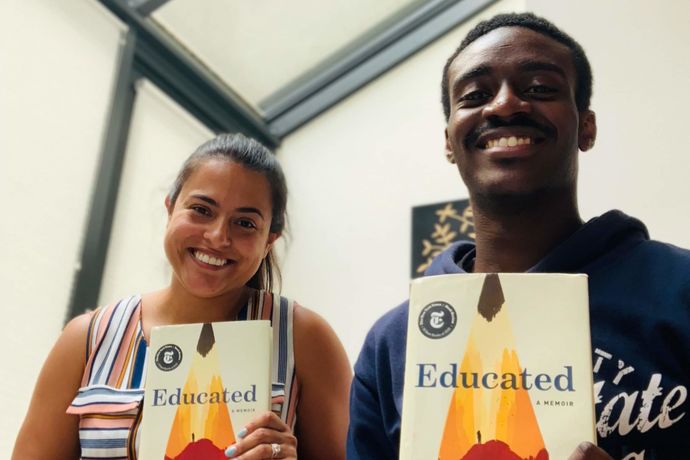The Power of Early Arts Exposure

Herne Jean-Baptiste kept the note I wrote him at the end of sixth grade, and my words from seven years ago ring even truer today: “It was an honor to be your dance teacher.”
As a Teach for America corps member, I created an afterschool dance club at my placement school in Miami-Dade. The principal was concerned that the older students—sixth graders at the time—were becoming disengaged in school. Recounting the limited dance opportunities during my own childhood, I wanted to expose my students to dance at a young age, and create positive out-of-school experiences.
About 10 sixth-grade students signed up for the club, and Herne was one of them. We practiced weekly with a culminating performance at the Adrienne Arsht Center for Performing Arts at the TFA end-of-year celebration. Students said they felt like celebrities, pointing to their new experiences, such as getting a dressing room, enjoy delicious snacks, and dancing in front of large and enthusiastic audience. Like many TFA corps members, that was my second and last year at Morningside K-8 Academy. I felt I had successfully created a positive experience that they would remember.
For Herne, however, it became much more than a memory. Hearing that first applause was a turning point in his life and led to a career that would allow us to cross paths again in the future. Herne’s first exposure to dance was during that afterschool hip-hop club. Dance gave Herne confidence and allowed him to come out of his shell. With the help of his teachers, he later applied to and attended summer dance programs at the lauded Alvin Ailey School in Miami.
For high school, Herne auditioned to attend a specialized arts school, and enrolled in the New World High School of the Arts. He took those four years seriously by training daily and exceling in school, all while still maintaining a part-time job to support his family. He spent his summers training with the Dance Theater of Harlem, and with Thomas Amour Youth Ballet during the school year. Herne credits his success to a series of teachers and mentors who continued to believe in him, and presented him with new opportunities that aligned with his interests and talents.

Herne’s tenacity paid off. This fall, he started his first year at New York University’s Tisch School of the Arts on a full tuition scholarship. Herne practices hip-hop, jazz, ballet, Haitian folklore, West-African, modern, and contemporary. As a first-generation college student, Herne never imagined going to a four-year university; he thought that only students with connections got into selective universities. However, at New World High School he saw upperclassmen going to college to study dance, with a few even making it to NYU. Herne was accepted to multiple dance college programs and conservatories including Point Park University, University of the Arts, University of South Florida, and SUNY-Purchase, but knew that NYU-Tisch was the perfect place for him.
Recently, Herne contacted me to tell me the news, and thanked me for being his first dance teacher. I also had news: I was also starting my own new journey at NYU in the fall as a research associate for the Research Alliance for NYC Schools, based at NYU's Steinhardt School of Culture, Education, and Human Development. I am also no longer Ms. Castillo; now I am Dr. Castillo.
Life had truly come full circle for both of us, from Morningside K-8 to NYU. When Herne arrived in New York, we immediately caught up. He showed me dance pictures and videos. I was so proud to see he surpassed me as a dancer (by a longshot). We then realized we also happened to be reading the same book, Educated, by Tara Westover (albeit all NYU first-years were required to read it). Herne and I were both excited to start our journeys at NYU in the Fall, so we even got our university IDs on the same day.
Herne’s story exemplifies the importance of early exposure, mentorship, role models, and providing opportunities for underserved students. Herne was serendipitously presented with a chance to take dance lessons with me for free. However, not all students from low-income households come across these opportunities, and students across the nation need access to the same opportunities that Herne was able to enjoy. Through the mentorship and role models of his youth, Herne took the initiative to continue finding opportunities to dance. He met mentors and role models who helped propel his career forward, illustrating the lifelong impact of positive engagement between teachers, mentors, and their students in underserved communities.
Students need adults who will invest in their potential. They need to see that people that look like them and come from the same neighborhood can go to highly selective four-year universities. Importantly, students need to systemically be given the resources and opportunities throughout their educational trajectory to thrive.
Wendy Castillo, PhD, is research associate at the Research Alliance for NYC Schools and Lecturer at Princeton University’s Woodrow Wilson School of International and Public Affairs. She is a 2011 Miami-Dade Teach For America alum.


